The AMD Radeon RX 9070 enters the market at a peculiar time for graphics cards. With Nvidia's latest generation just launched, the Radeon RX 9070, priced at $549, directly competes with the underwhelming GeForce RTX 5070. In this head-to-head, AMD's new offering emerges as the clear winner, making it the go-to choice for 1440p gaming enthusiasts. However, the decision isn't as straightforward as it seems, primarily due to AMD's own pricing strategy. The Radeon RX 9070 is only $50 less than the superior Radeon RX 9070 XT. While the price difference aligns with the performance gap—the 9070 being about 8% slower and 9% cheaper—it's challenging to justify not spending the extra $50 for the enhanced performance of the 9070 XT. Nonetheless, when choosing between these two AMD options, the outlook remains promising for Team Red.
Purchasing Guide
The AMD Radeon RX 9070 is set to launch on March 6, with a starting price of $549. However, expect various models to be priced higher. For the best value, aim to purchase a model as close to the starting price as possible, especially considering its proximity in price to the Radeon RX 9070 XT.
AMD Radeon RX 9070 – Photos
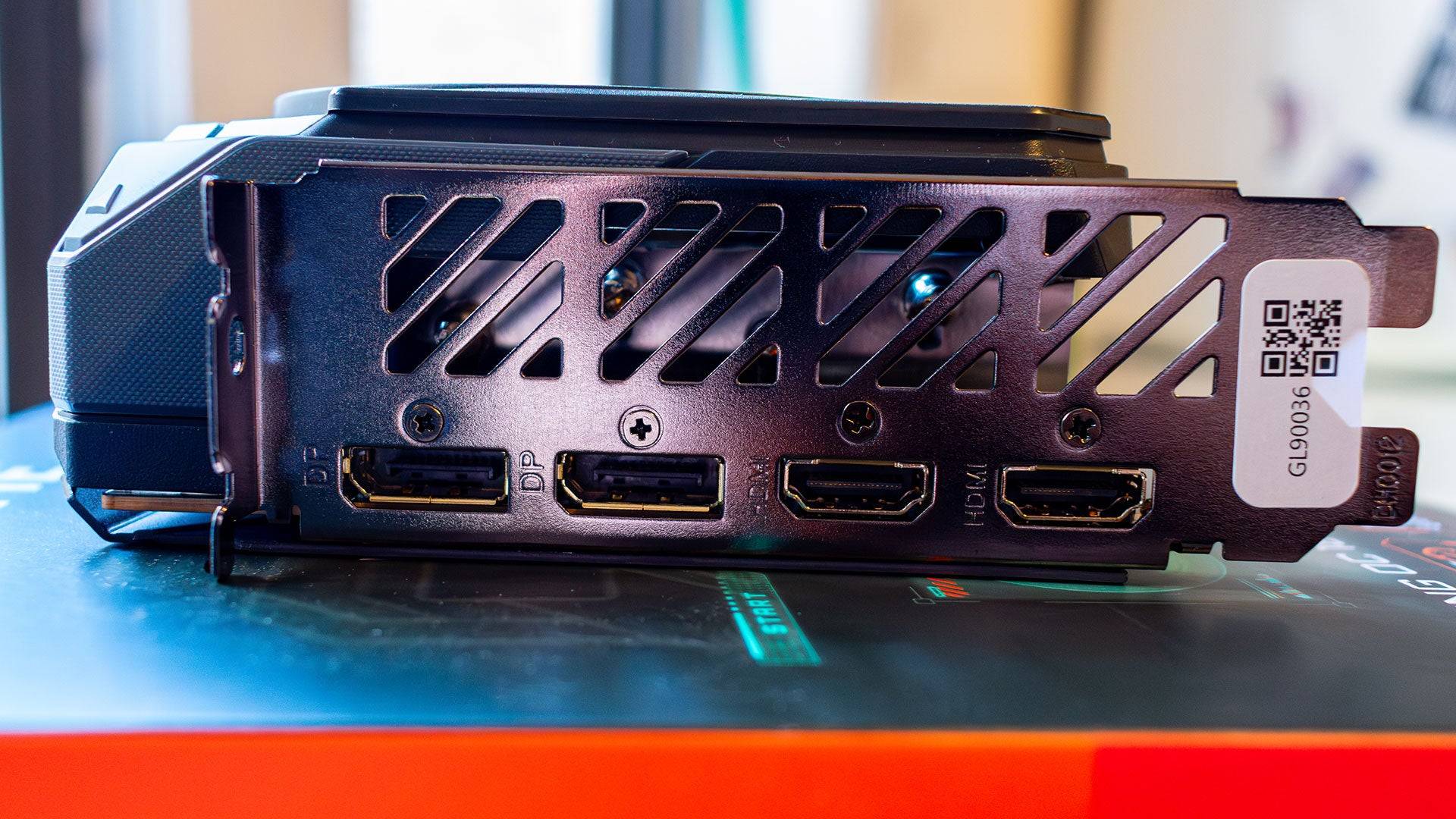
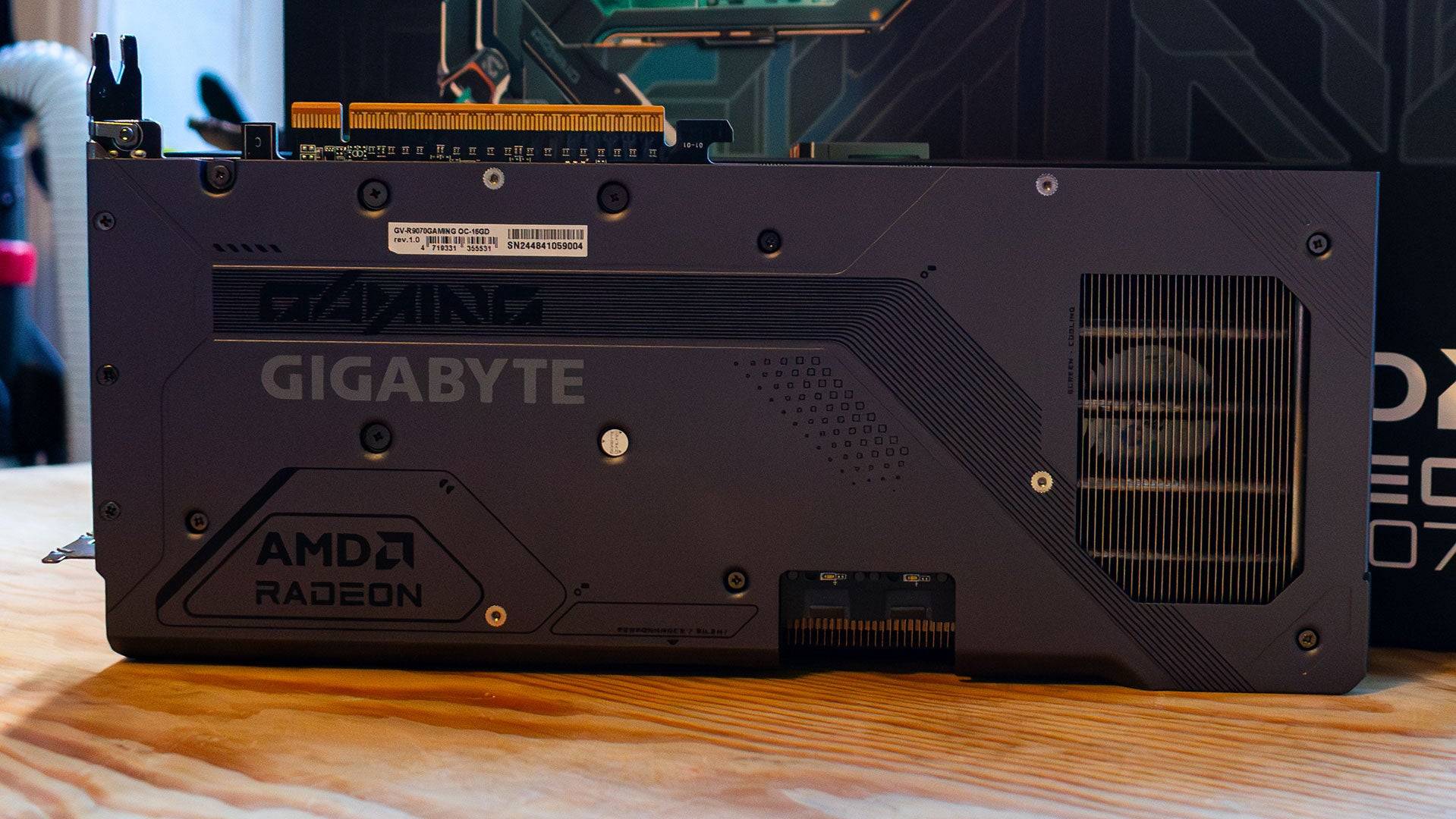 4 Images
4 Images
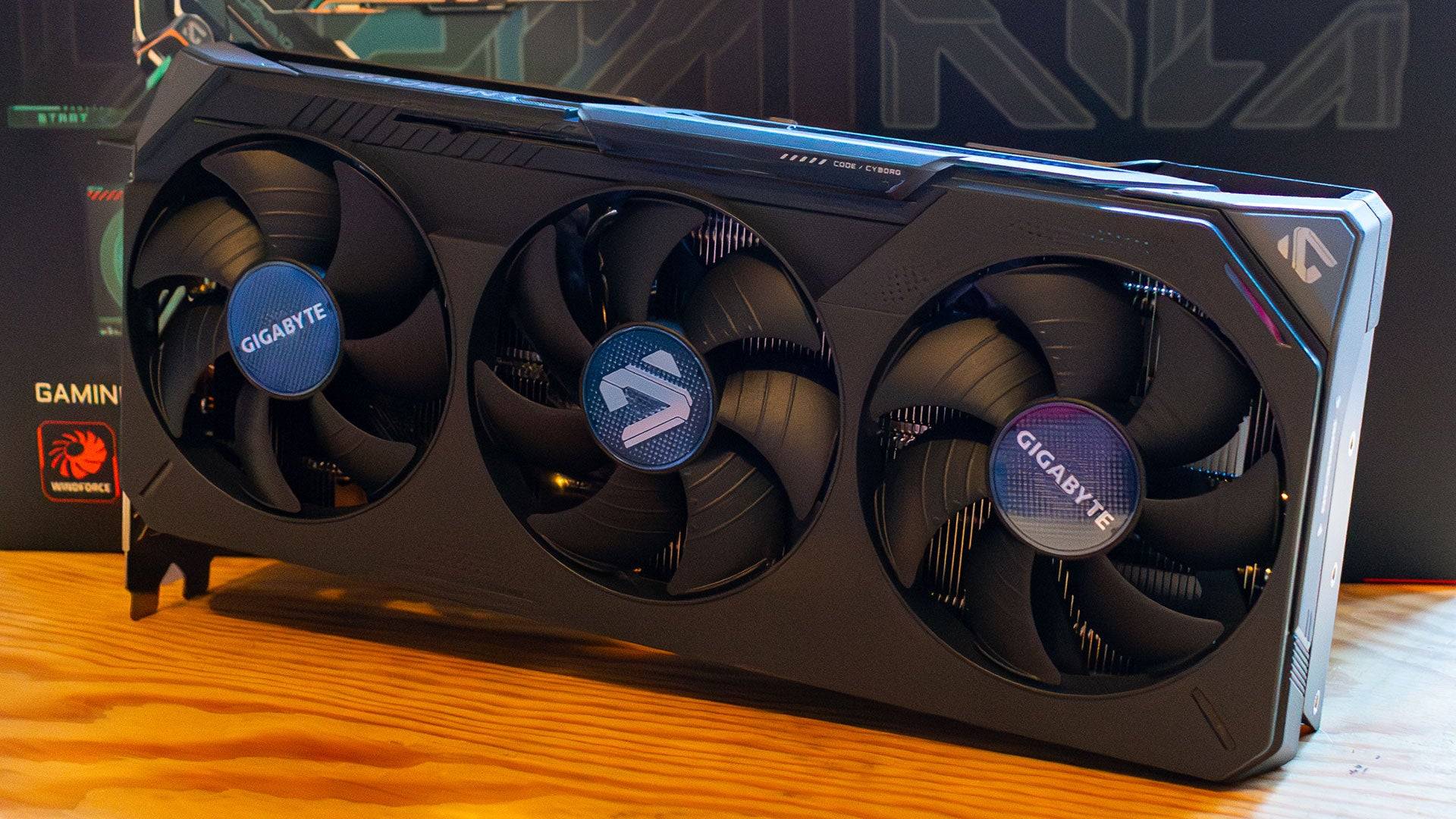
Specs and Features
Like its sibling, the Radeon RX 9070 XT, the RX 9070 leverages the new RDNA 4 graphics architecture. This advancement significantly boosts performance, allowing the 9070 to outshine the previous generation's Radeon RX 7900 GRE by a wide margin, despite having 30% fewer compute units.
The Radeon RX 9070 boasts 56 Compute Units, each equipped with 64 Streaming Multiprocessors (SMs), totaling 3,584 shaders. Each compute unit also features one Ray Accelerator and two AI Accelerators, summing up to 56 and 112, respectively. These enhancements enable the card to excel in ray tracing and introduce AMD's FidelityFX Super Resolution (FSR) 4, marking the debut of AI upscaling on AMD GPUs.
Similar to the 9070 XT, the RX 9070 comes with 16GB of GDDR6 VRAM on a 256-bit bus, mirroring the memory setup of the 7900 GRE. This configuration should suffice for 1440p gaming for years to come. Although adopting GDDR7 like Nvidia would have been preferable, it likely would have increased the price.
AMD suggests a minimum 550W power supply for the RX 9070, given its 220W power budget. My tests, however, showed a peak consumption of 249W, suggesting a 600W PSU for safety.
Notably, AMD isn't releasing a reference design for the RX 9070, leaving production to third-party board partners. I tested the Gigabyte Radeon RX 9070 Gaming OC 16G, a triple-slot card with a slight factory overclock.

FSR4
Since the rise of DLSS in 2018, AI upscaling has become a key method for enhancing performance without sacrificing image quality. Previously an Nvidia-exclusive feature, FSR 4 now brings AI upscaling to AMD GPUs.
FSR 4 utilizes previous frames and in-game data, processing them through an AI model to upscale lower resolution images to your native resolution. This differs from the Temporal upscaling of FSR 3, which lacked an AI algorithm, often resulting in artifacts like ghosting.
However, FSR 4's AI model incurs a slight performance hit compared to FSR 3. For example, in Call of Duty: Black Ops 6 at 1440p on the Extreme preset, FSR 3 achieved 165 fps, while FSR 4 dropped to 159 fps. Similarly, in Monster Hunter Wilds at 4K with ray tracing, the RX 9070 managed 81 fps with FSR 3, but only 76 fps with FSR 4.
Fortunately, the Adrenalin software allows users to toggle between FSR 3 and FSR 4, enabling a choice between better image quality or slightly higher performance. As a fan of single-player games, I prefer FSR 4, but for fast-paced online games like Marvel Rivals, FSR 3 might be the better option.
AMD Radeon RX 9070 XT & 9070 – Benchmarks
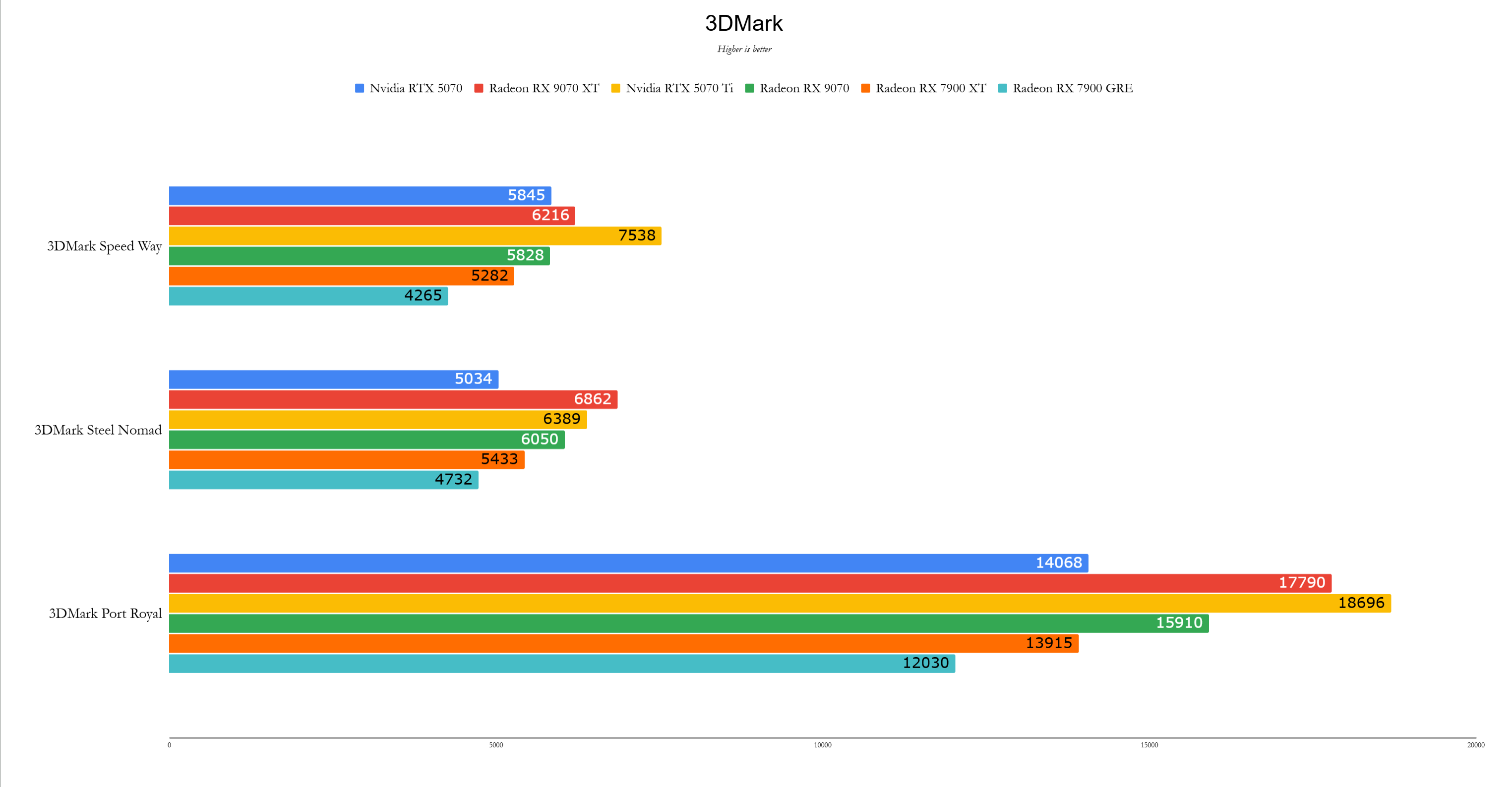
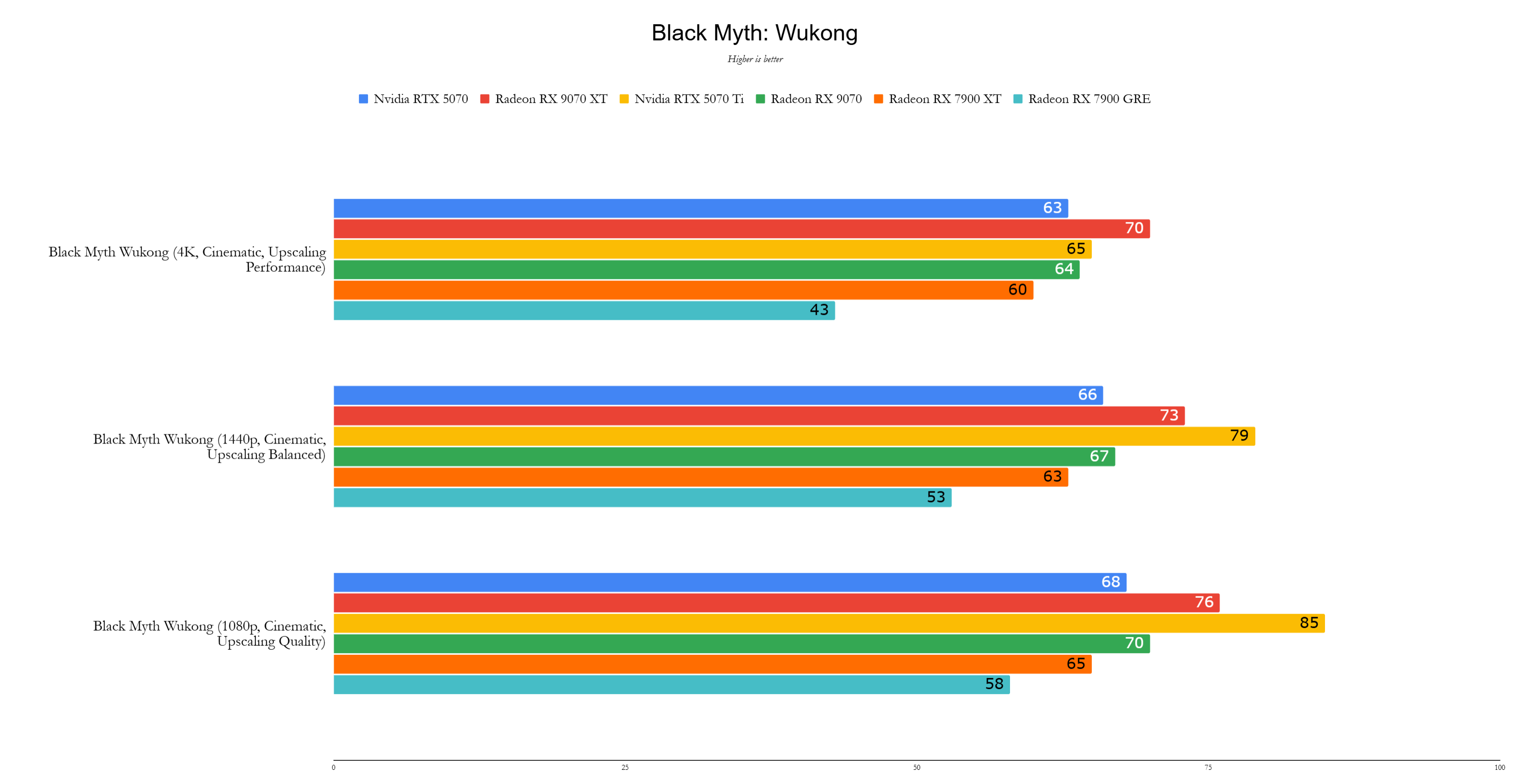 11 Images
11 Images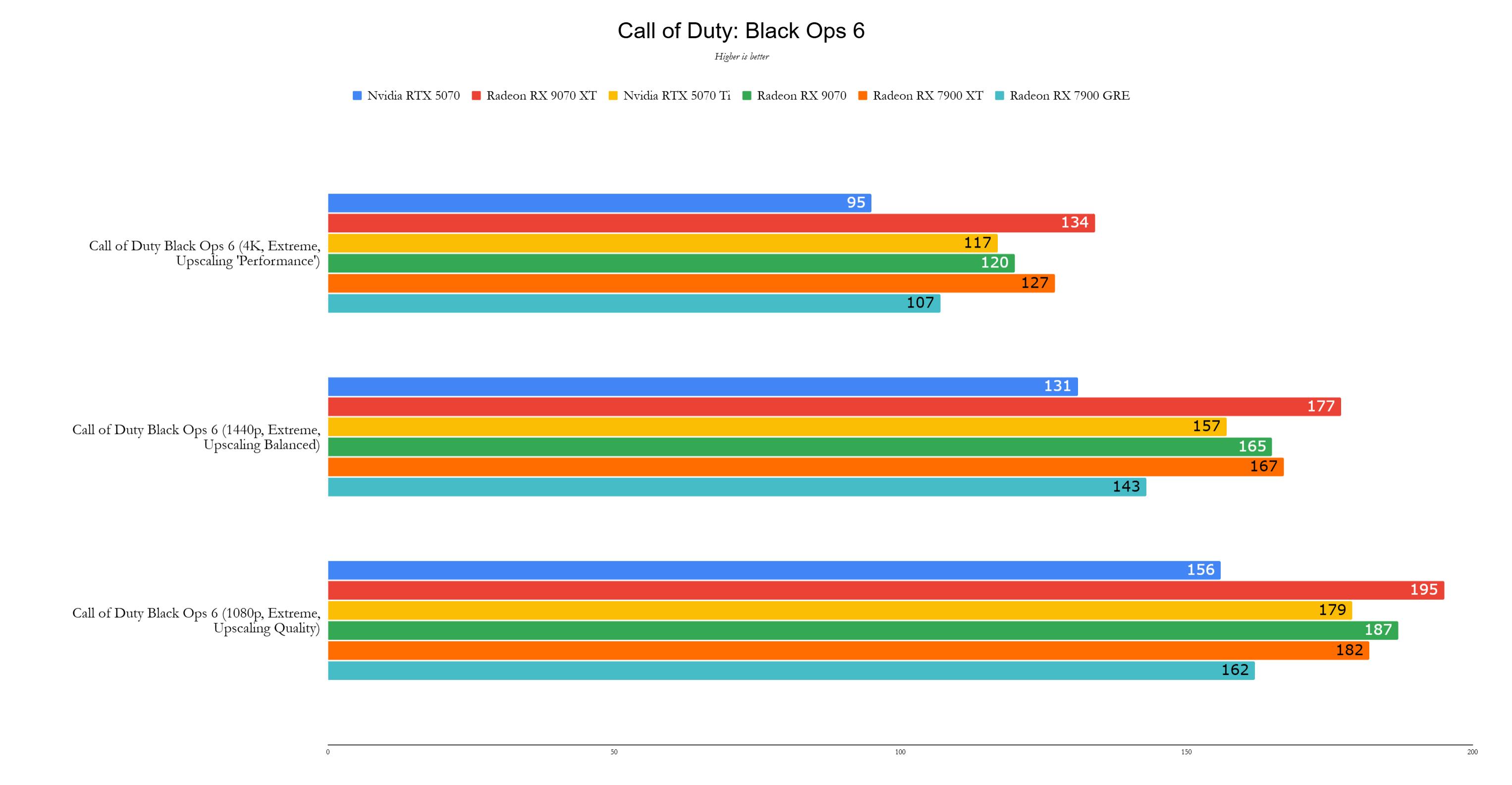
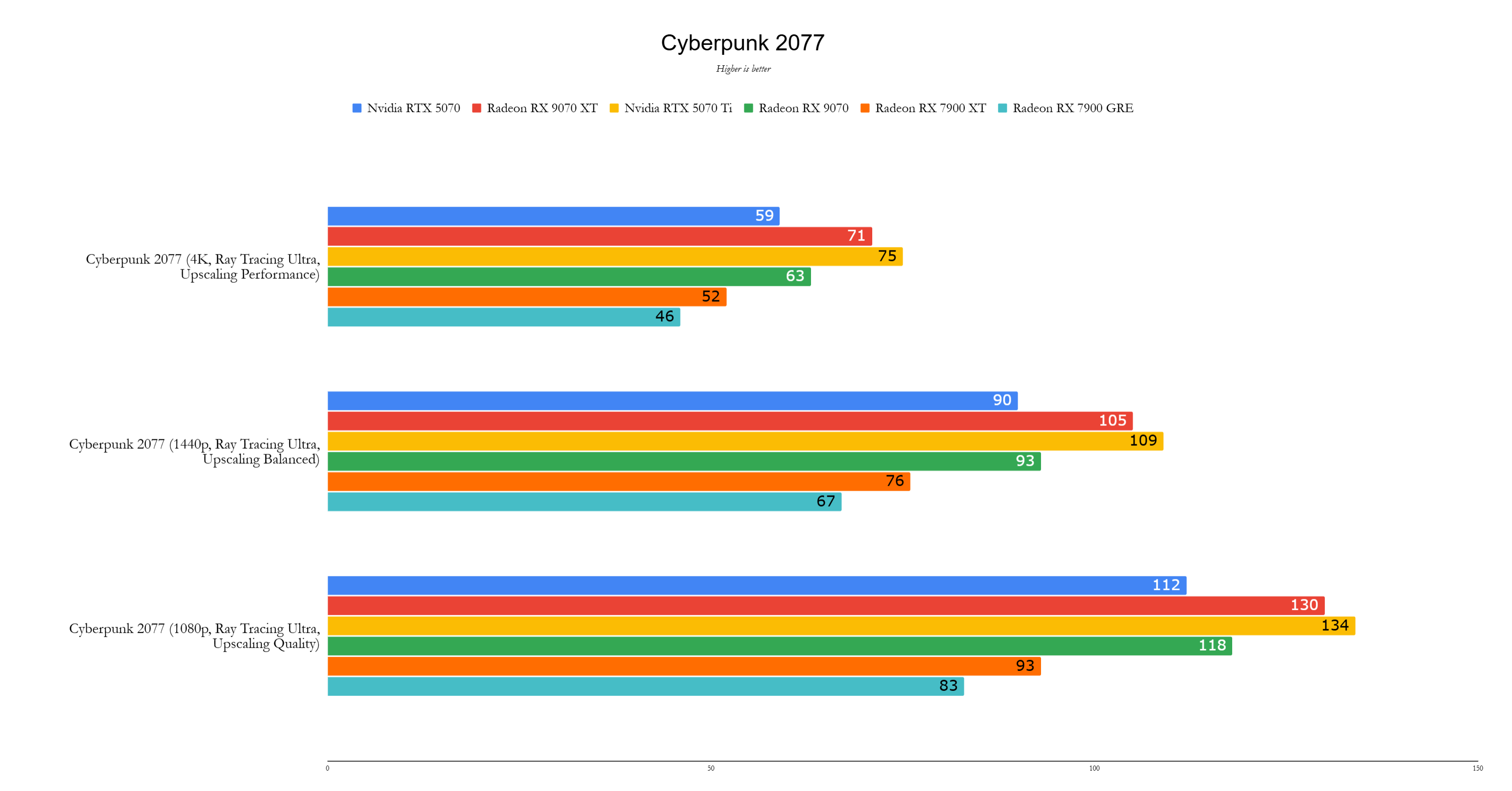
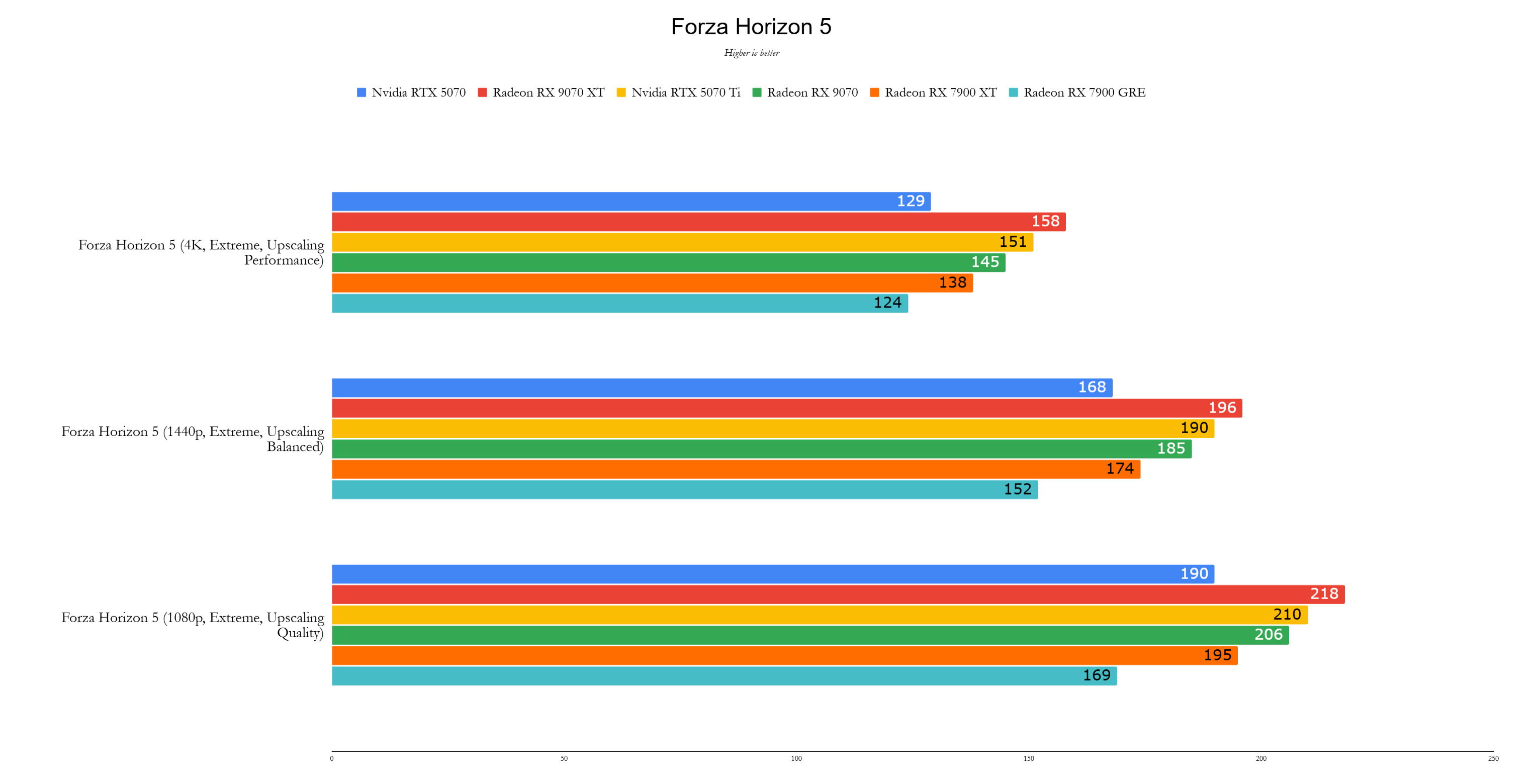
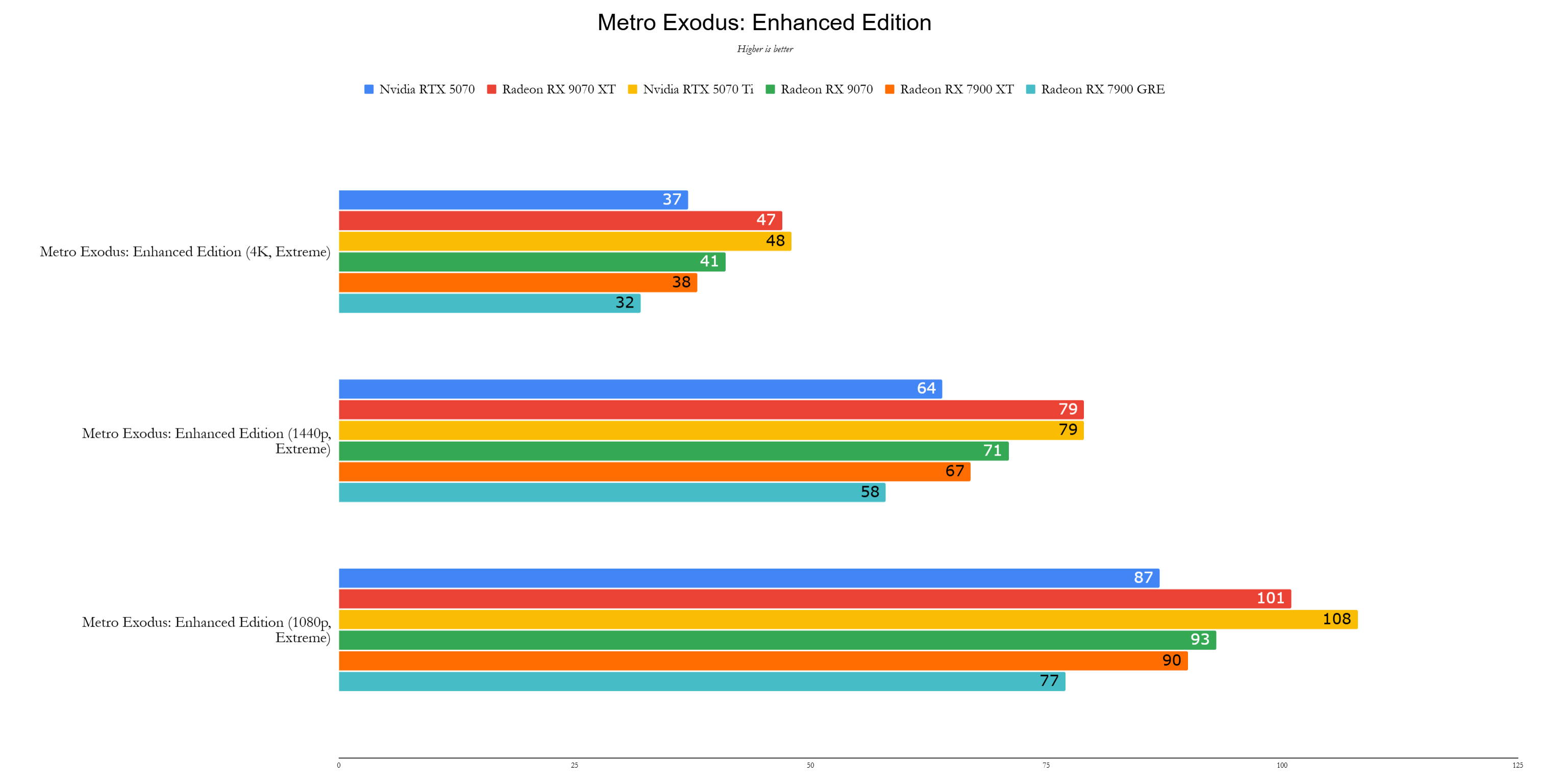
Performance
Priced at $549, the AMD Radeon RX 9070 directly challenges the Nvidia GeForce RTX 5070, outperforming it in most scenarios. At 1440p, this mid-range GPU averages 12% faster than the RTX 5070 and boasts a 22% lead over its predecessor, the RX 7900 GRE, which also launched at $549 in 2024. This represents a substantial leap forward, especially considering the 9070's reduced core count.
It's worth noting that I tested a factory overclocked version of the RX 9070, the Gigabyte Radeon RX 9070 Gaming OC, which has a reported boost clock of 2,700Mhz—a 7% increase. This overclock should yield a 4-5% performance boost.
All graphics cards were tested using the latest public drivers at the time of writing: Nvidia cards on Game Ready driver 572.60, AMD cards on Adrenalin 24.12.1, and the RX 9070 and 9070 XT on review drivers provided by AMD, as was the RTX 5070.
In 3DMark, the RX 9070 shows strong potential. In the Speed Way test with ray tracing, it scores 5,828 points, nearly matching the RTX 5070's 5,845. In the Steel Nomad test without ray tracing, the RX 9070 significantly outperforms the RTX 5070, scoring 6,050 to 5,034—a 20% difference at the same price point.
Test System
- CPU: AMD Ryzen 7 9800X3D
- Motherboard: Asus ROG Crosshair X870E Hero
- RAM: 32GB G.Skill Trident Z5 Neo @ 6,000MHz
- SSD: 4TB Samsung 990 Pro
- CPU Cooler: Asus ROG Ryujin III 360
In Call of Duty: Black Ops 6, a game AMD showcased at CES 2025, the RX 9070 excels at 1440p with FSR 3 set to Balanced, achieving 165 fps compared to 131 fps from the RTX 5070 and 143 fps from the 7900 GRE—a 26% and 15% lead, respectively.
Cyberpunk 2077, traditionally favoring Nvidia, sees the RX 9070 outperforming the RTX 5070 by 3% at 1440p with the Ray Tracing Ultra preset—a significant achievement for AMD.
In Metro Exodus, tested without upscaling, the RX 9070 averages 71 fps, compared to 64 fps from the RTX 5070—an 11% lead in another Nvidia-favored title.
Red Dead Redemption 2, using Vulkan, sees the RX 9070 achieving 142 fps at 1440p with max settings, compared to 115 fps from the RTX 5070—a 23% performance lead.
In Total War: Warhammer 3, the RX 9070's lead is most pronounced at 4K, but at 1440p, it's neck-and-neck with the RTX 5070, with the RX 9070 at 135 fps and the RTX 5070 at 134 fps.
Assassin's Creed Mirage sees the RX 9070 achieving 193 fps at 1440p with the Ultra preset and FSR set to Balanced, compared to 163 fps from the RTX 5070—an 18% lead.
Black Myth Wukong, another Nvidia-favored game, results in a close contest, with the RX 9070 at 67 fps and the RTX 5070 at 66 fps at 1440p with the Cinematic preset.
Forza Horizon 5, despite its age, rewards high frame rates, with the RX 9070 averaging 185 fps at 1440p, compared to 168 fps from the RTX 5070 and 152 fps from the RX 7900 GRE—a 12% and 25% difference, respectively.
Launching shortly after the GeForce RTX 5070, the Radeon RX 9070's superior performance at the same $549 price point is a testament to AMD's competitive edge. With 16GB of VRAM, the RX 9070 is better equipped for future-proofing than the RTX 5070, despite the latter's GDDR7 memory. Even if performance were equal, the RX 9070's larger VRAM capacity would make it the better value. Combined with its performance advantages, the Radeon RX 9070 stands out as the superior choice for gamers seeking a powerful 1440p gaming experience.






